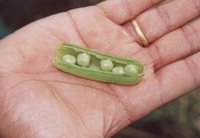 Spring is here! This spring & summer we are going to garden and try to grow vegetables. Two years ago (Summer '04) we tried gardening at a garden plot in Tudek Community gardens here in State College. We had a 600 sq. ft. plot and there were four of us. Our efforts met limited success and we realized that gardening required a lot of patient and regular efforts. We were a bit lazy and didn't visit our plot with the regularity it needed. We didn't utilize all the space that was available to us either. Inspite of all this we got some really good veggies out of our efforts. Some photos of our gardening efforts are here.
Spring is here! This spring & summer we are going to garden and try to grow vegetables. Two years ago (Summer '04) we tried gardening at a garden plot in Tudek Community gardens here in State College. We had a 600 sq. ft. plot and there were four of us. Our efforts met limited success and we realized that gardening required a lot of patient and regular efforts. We were a bit lazy and didn't visit our plot with the regularity it needed. We didn't utilize all the space that was available to us either. Inspite of all this we got some really good veggies out of our efforts. Some photos of our gardening efforts are here.Last year we couldn't garden because we were in India for the first two months of the growing season. So I had to stay content on the few potted plants in our balcony and the bulbs that I tried to grow over the winter. The plotted plants did really well indoors during the winter. The bulbs (Crocus, Tulips and Gladioli) are doing really fine too and we expect a lot of flowers.
In 2004 we also volunteered at the Center for Sustainability to help double dig some of their garden plots. Double digging is the first step in the bio-intensive gardening technique, which we were unfamiliar with. So I did a little bit of research on the technique and this year I am going to try it on our garden plot. This technique was developed by Alan Chadwick and furthered and promoted by John Jeavons of Ecology Action. It aims at maximizing the yield from the available area AND maintain the soil quality at the same time through sustainable organic methods of gardening. The center for sustainability has a very good webpage about this technique. Some other links I found are at the bottom of this post.
This year I am using the book "How to Grow More Vegetables" by John Jeavons as a guide for the bio-intensive gardening technique. I am also going to record the costs I incur and the yield from my plot so that I can keep track of the success of my efforts. I will also try to post about the progress of my efforts on this blog.
A few days ago I was looking for seeds online and I remembered an interesting story about the "Radiator Charlie's" heirloom tomatoes, that I had heard on NPR some time ago. So I did a bit of search and found out that it was one of the episodes of Living on Earth that had featured the story. It is an amazing story about a guy who wanted to create the best tomato variety and how it helped him pay off the mortgage on his house. I would like you to hear it too. It is available to download in MP3 format here or you can listen to streaming audio here. The transcript of the show is available too. I am going to see if I can get some of the "Radiator Charlie's mortgage lifter" tomatoes to plant in our plot.
Overall I am pretty excited about the garden plot. First work day is April 22 and looking forward to a lot of roots shoots and leaves.... and a lot of double digging.
May your summer be bright and full of light!
Links:
1> CFS webpage on biointensive gardening technique
2> A webpage from bountiful gardens
3> Ecology action biointensive gardening webpages
4> Books by John Jeavons
Technorati Tags: gardening, biointensive
3 comments:
How fun! Hope you'll be posting pics of the garden as it grows :)
The technique of double-digging was not "developed by Alan Chadwick and furthered and promoted by John Jeavons of ecology Action." It's an oooold agricultural technique that has been around for hundreds of years.
I know this is an older post, but in case somebody ends up here drawn to the references to Alan Chadwick, it might be good to clarify the comment left on March 31, 2007. Yes, double digging is an old technique, but often the term is used to refer to Chadwick's method in general. The name he used was the "Biodynamic French Intensive Method." This includes a lot more than the mere cultivation techniques of digging the soil. Much of his methods were developed by him over the years. He really sparked the organic farming and gardening movement that grew up around his teaching garden at the University of California in Santa Cruz. For more specifics about Alan's methods and philosophy, see this website:
Alan Chadwick
Post a Comment